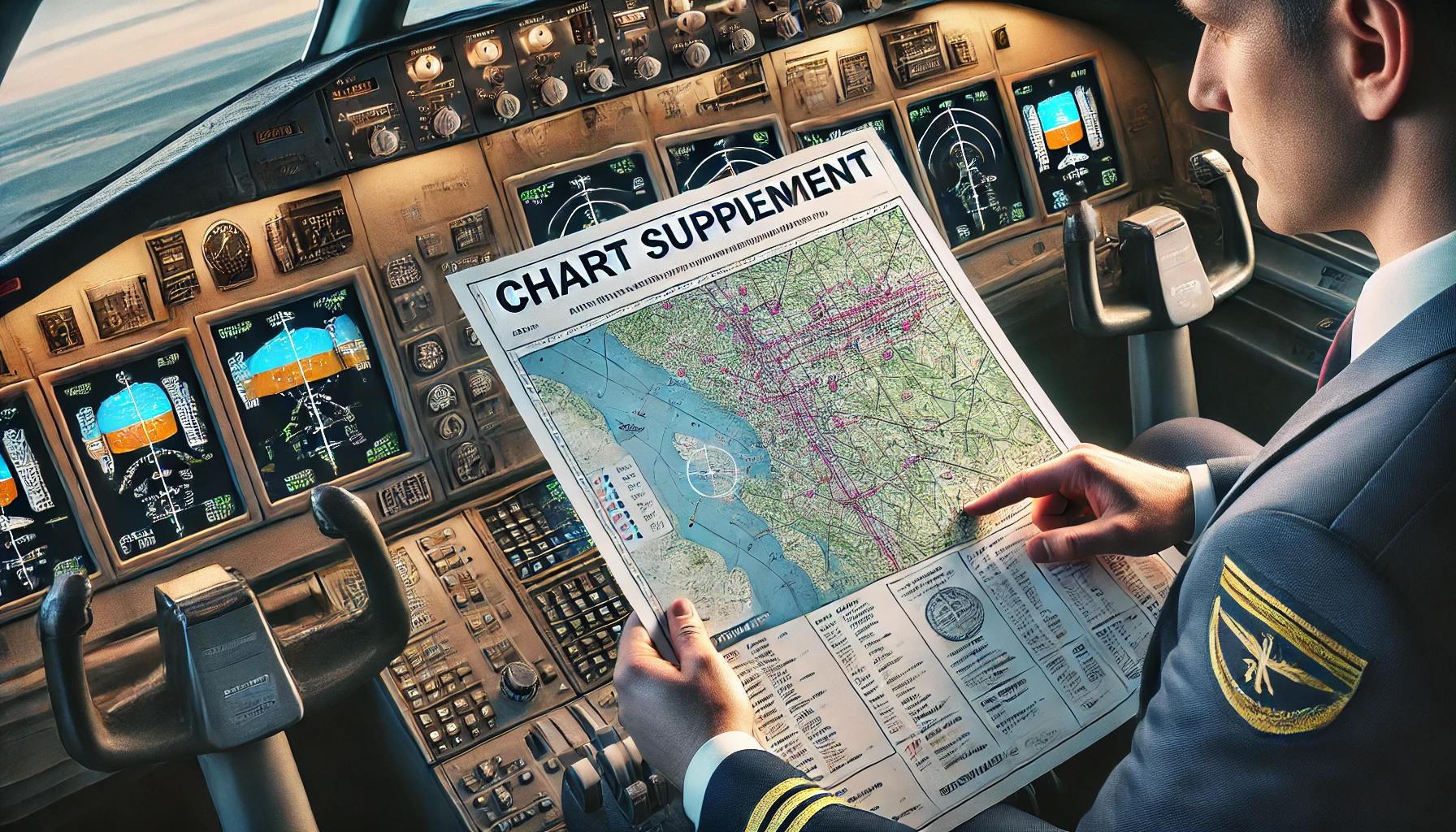In the dynamic world of aviation, where every flight is a blend of precision and preparation, pilots rely on an array of tools to ensure safe and efficient journeys. Among these essential resources, chart supplements stand out as invaluable companions in the cockpit. But what exactly are chart supplements, and why are they so critical to effective flight planning?
In this blog post, we’ll explore how pilots utilize these comprehensive guides to navigate airspace complexities, avoid hazards, and enhance their situational awareness—all while ensuring that each takeoff leads to a smooth landing.
Buckle up as we dive into the vital role that chart supplements play in making our skies safer for everyone!
Introduction to Chart Supplements
When it comes to flight planning, every detail matters. Pilots rely on a variety of tools to ensure safe and efficient navigation, and one essential resource in their toolkit is the chart supplement. These comprehensive documents provide vital information about airports, airspace structures, procedures, and much more.
Yet, many aviation enthusiasts or novice pilots might not fully understand what these supplements entail or how crucial they are during both pre-flight preparations and in-flight operations.
Types of Chart Supplements
Chart supplements come in various forms, each serving a specific purpose for pilots. The most common type is the Airport/Facility Directory (AFD). This resource provides essential information about airports, including communications frequencies, runway specifications, and available services.
Another important type is the Visual Flight Rules (VFR) Supplement. It offers detailed charts designed specifically for VFR navigation. These include vital data on airspace classifications and navigational aids.
Pilots also rely on Notices to Airmen (NOTAMs), which inform them of temporary changes affecting flight operations. This could involve closed runways or airspace restrictions due to events.
Additionally, Special Use Airspace Charts detail areas where specific activities may restrict general aviation access. Each supplement plays a unique role in ensuring safety and efficiency during flight planning and execution.
Purpose of Chart Supplements in Flight Planning
Chart supplements serve a vital function in flight planning by providing essential information that goes beyond standard charts. They contain detailed data about airports, including runway specifications and navigation aids.
Pilots rely on chart supplements to access critical updates regarding airspace changes or temporary flight restrictions. This ensures they have the latest details before embarking on their journey.
Additionally, these supplements include valuable notes on communication frequencies and services available at various airports. Whether it’s fuel availability or customs procedures, pilots can prepare adequately for all aspects of their flights.
Understanding this wealth of information is crucial for effective navigation and safety in the skies. Having accurate data allows pilots to make informed decisions during both pre-flight preparations and in-flight situations.
How Pilots Utilize Chart Supplements
Pilots rely on chart supplements as vital resources during their flight operations. These supplements provide extensive information about airports, airspace, and navigational aids that aren’t always covered in standard charts.
Before takeoff, pilots review the relevant chart supplement to familiarize themselves with airport layout and runway details. This includes runway lengths, surface types, and approach procedures which are critical for safe landings.
During the flight planning phase, they use these supplements to identify any temporary changes like NOTAMs (Notices to Airmen) affecting airspace or airports. Such updates can be crucial for avoiding potential hazards.
In-flight, pilots may refer back to these documents if unexpected circumstances arise. Whether it’s navigating through unfamiliar airspace or dealing with weather-related diversions, having quick access to this information enables them to make informed decisions quickly.

Pre-flight Planning with Chart Supplements
Pre-flight planning is a critical step for pilots, and chart supplements play an essential role in this process. These resources provide detailed information about airports, navigation aids, airspace classifications, and more.
Before takeoff, pilots review the chart supplement relevant to their route. They examine specific details like runway lengths, surface types, and available services at their destination airport. This helps them assess suitability for landing.
Additionally, chart supplements include vital data on communication frequencies and any temporary flight restrictions that may be in place. Such information can impact flight plans significantly.
By integrating these insights into their pre-flight checklist, pilots enhance safety and efficiency. The careful analysis of chart supplements allows them to anticipate challenges during the flight while ensuring compliance with regulations. Being well-prepared ultimately fosters a smoother flying experience from start to finish.
In-flight Use of Chart Supplements
During flight, pilots rely on chart supplements to navigate complex airspace and ensure safety. These resources provide critical information about airports, air traffic control procedures, and any temporary changes that may affect the route.
Having immediate access to this data is vital for real-time decision-making. Whether it’s identifying nearby restricted areas or understanding runway dimensions, pilots use chart supplements as a reference guide throughout their journey.
Additionally, in-flight updates can highlight unexpected weather conditions or operational notices that might arise after departure. Adapting to these changes while airborne helps maintain situational awareness.
Moreover, electronic versions of chart supplements make it easier for pilots to zoom in on specific details without flipping through multiple pages. This streamlined access enhances efficiency and reduces distraction during crucial phases of flight.
Utilizing these tools effectively allows pilots to focus more on flying and less on guessing about potential hazards ahead.
Common Mistakes and Tips for Using Chart Supplements
One common mistake pilots make is overlooking updates. Chart supplements are frequently revised, and relying on outdated information can lead to serious navigation errors.
Another issue arises from misinterpreting symbols and abbreviations. Each chart supplement comes with a legend that helps decode these elements. Familiarizing yourself with this key ensures clarity during your flight planning.
Some pilots also neglect to cross-reference charts with other navigational tools. Combining data enhances safety and accuracy when plotting routes.
Additionally, it’s easy to focus solely on the visual aspects of a chart without reading the accompanying text thoroughly. Important notes about airspace restrictions or temporary conditions may be buried in the details.
To avoid pitfalls, create a checklist for pre-flight preparation that includes reviewing relevant chart supplements. Consistent practice will enhance your proficiency in utilizing these essential resources effectively.
Importance of Regularly Updating Chart Supplements
Regularly updating chart supplements is vital for pilots. Aviation environments change frequently, and outdated information can lead to dangerous situations.
Navigational aids, airspace classifications, and runway conditions evolve. If a pilot relies on old data, they might miss critical updates that affect their flight path or safety procedures.
Additionally, regulatory changes can occur without much notice. These changes are often reflected in the latest supplements but could be overlooked if pilots stick with older editions.
Updating chart supplements also ensures compliance with local aviation regulations. Flying without the most current information may result in legal repercussions or operational hazards.
Accessing updated materials fosters confidence among pilots as they prepare for flights. It keeps them informed about any new obstacles or potential challenges along their route.
In an industry where precision is paramount, neglecting this task simply isn’t an option.
Conclusion: The Importance of Chart Supplements in Safe Flight Planning
Chart supplements play a vital role in ensuring the safety and efficiency of flight planning. They provide essential data that helps pilots navigate complex airspaces, understand airport layouts, and identify potential hazards along their routes. With regular updates and comprehensive information, chart supplements are indispensable tools for both pre-flight preparation and in-flight decision-making.
By utilizing these resources effectively, pilots enhance their situational awareness and reduce risks associated with flying. The importance of staying informed on changes within these supplements cannot be overstated. Regularly checking for updates ensures that pilots have access to the most current information available.
Ultimately, embracing chart supplements as an integral part of flight planning contributes significantly to safer skies and more confident flying experiences. It’s clear that thorough knowledge of these resources is essential for every pilot aiming to maintain high standards of safety during their journeys.




